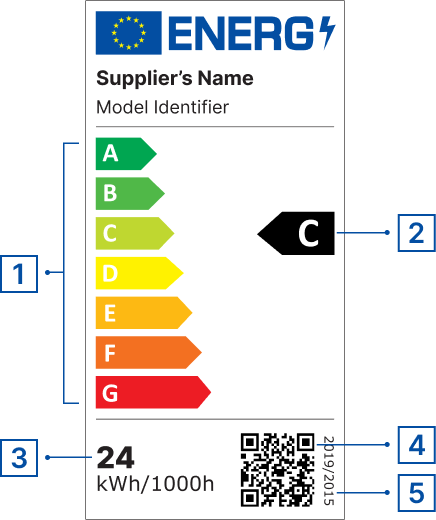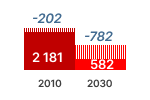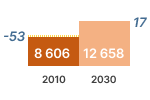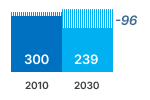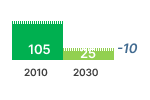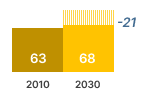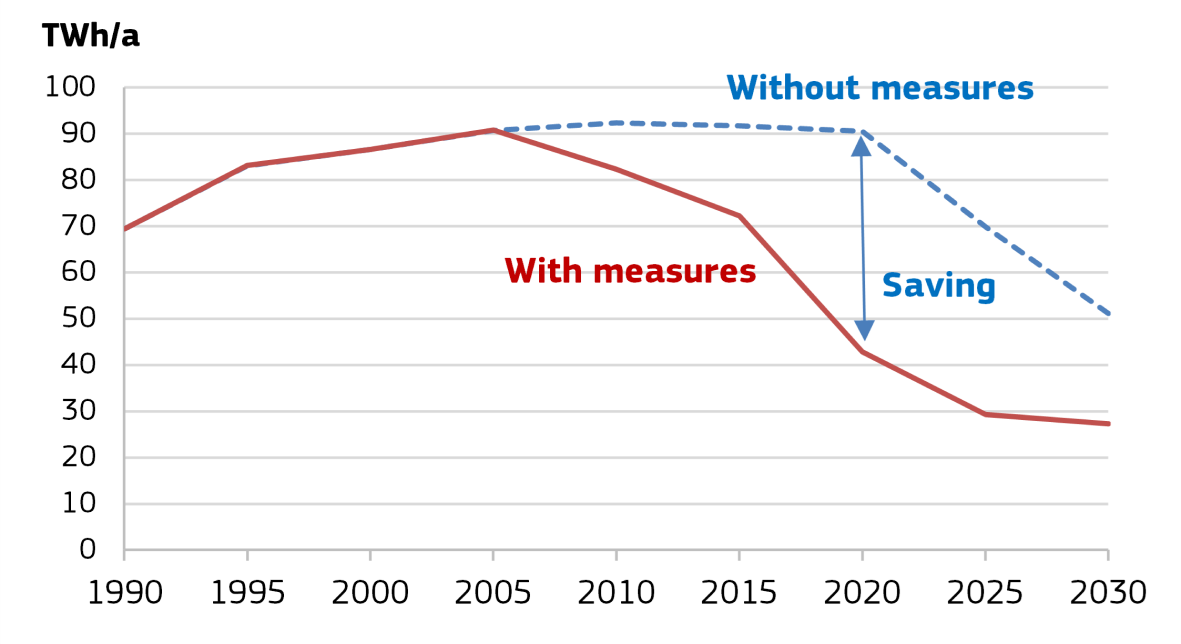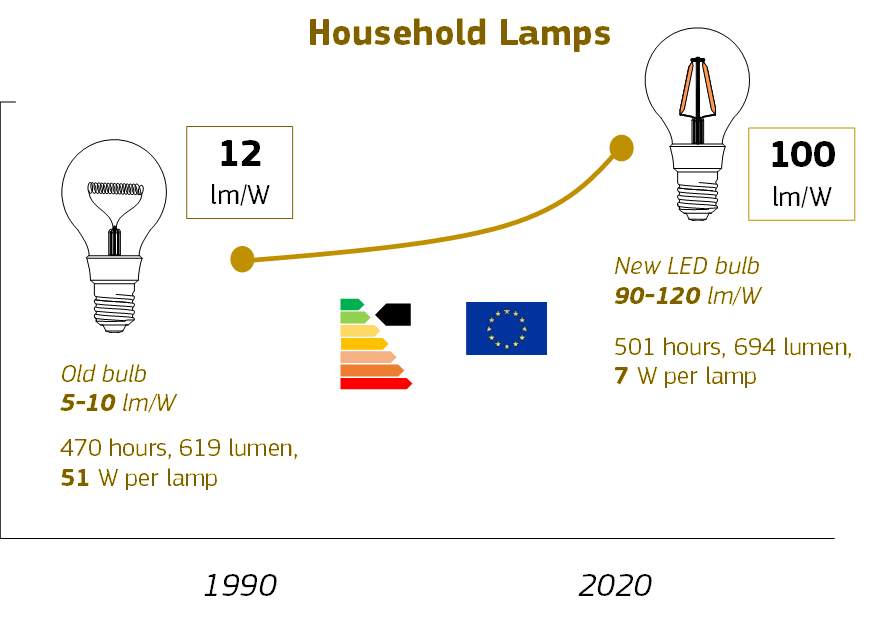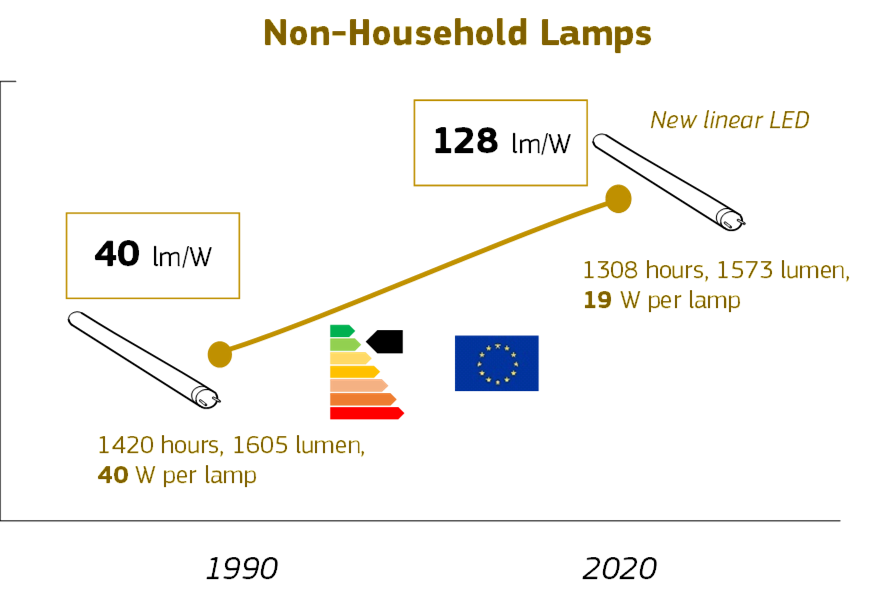Light sources (lamps) are the largest Ecodesign product group in terms of installed units. In 2020, almost 11 billion lamps were in use in Europe, which is more than 24 lamps per EU27 citizen. Although a single light source uses a relatively small amount of energy compared to other Ecodesign products, the huge quantity of installed products makes lighting the third largest energy consumer (following industry components and space heating), covering 8% of the primary energy accounted in EIA for year 2020. The various Ecodesign studies distinguish many different lamp types, but EIA summarises their data in the six main groups explained below (LED, HID, LFL, CFL, HL (tungsten) and GLS).
Source: estimations from the Ecodesign Impact Accounting Overview Report 2024
Light Source Types
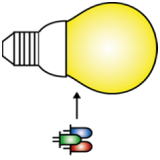
LED - Light Emitting Diode
Light emission derives from electrons that fall back from a high-energy state to a low-energy state, emitting the difference in energy as a photon (a small quantity of light). Emission occurs in a solid material consisting of very thin (microns) semi-conductor layers (‘solid state lighting (SSL)’. In 2015: 80-140 lm/W. Expected > 200 lm/W in future.
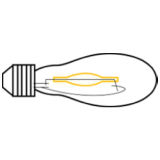
HID - High-Intensity Discharge lamp
Creates an electric discharge arc between two electrodes in a quartz or ceramic tube-like enclosure that contains a gas and metal salts. Provides high-intensity light from a small space. Often used in street lighting. High-pressure mercury lamps phased-out by Ecodesign in 2015. High-pressure sodium lamps (characteristic orange light, not suitable for indoor use) have efficacy 90-140 lm/W. Recent metal-halide lamps produce white light with efficacy 80-120 lm/W.
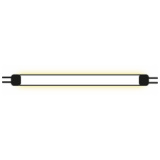
LFL - Linear Fluorescent Lamp
Use technology similar to CFL, but are straight tubes with electric connections on both sides. Available in different lengths (e.g. 0.9, 1.2, 1.5 m) and in different diameters (e.g. T8: 25 mm, T5: 16 mm), often applied for office lighting. Older models (T12 and T8 halo-phosphor) now phased-out by Ecodesign. LFL T8 tri-phosphor have efficacy around 80 lm/W (operating on old electro-magnetic ballast). Still widely used, but many substituted in recent years by modern LFL T5 with an efficacy of around 90 lm/W (operating on more efficient electronic ballast).
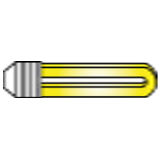
CFL - Compact Fluorescent Lamp
In a fluorescent lamp an electric current passes through a gas containing some milligrams of mercury vapour. Excited by the current, this vapour emits an ultraviolet light, that is converted to visible white light by a phosphor coating on the inside of the glass tube (fluorescence). In CFLs the tube is U-bent or a spiral, allowing a compact design that can substitute GLS or HL. Efficacy 50-70 lm/W. CFLs have a warm-up time.
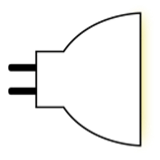
Tungsten (Halogen, HL)
The modern version of the filament lamp. The filament is contained in a small capsule (often placed inside a larger bulb) that is filled with a halogen gas. This extends the lifetime and allows a slightly higher efficacy. HL are available in mains-voltage or low-voltage. Typical efficacies 12 to 20 lm/W. Halogen lamps were popular as substitutes for GLS, but Ecodesign imposes the phase-out of many types in the coming years (2016-2018).
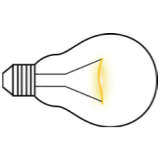
GLS - General Lighting Service
The classical ‘Edison’ filament lamp. When an electric current is made to pass through a thin metal wire (the ‘filament’), the metal opposes the current flow (electrical resistance) and as a result heats up and starts to glow (becomes ‘incandescent’), emitting electro-magnetic radiation of which a small part is visible, called light. Dominated sales until 2008-2010, but now phased-out due to Ecodesign. Efficacy around 10 lm/W.
The energy label for luminaires is discontinued, meaning that there has been no obligation for luminaires to bear an energy label since 25 December 2019. It is to be noted that certain luminaires could meet the definition of light source in the Commission Delegated Regulation (EU) 2019/2015 and thus be required to bear an energy label according to it.
Source: estimations from the Ecodesign Impact Accounting Overview Report 2024


